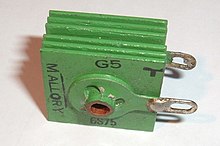Piper_Six
Pre-Flight
Hello folks,
1959 Bonanza, K-35, IO470C, about ~ 68 hours SMOH.
Has a Concord battery that is about a year old.
So, here is the situation. When started cold, as in after say a week or two or three, it starts up just fine, the voltage is held well, and no issues whatsoever. Fly about 45 minutes to an hour, stop and go into town, run errands and what have you, come back say 3 to 4 hours later, engine is still warm to the touch, but not very hot. This time, while attempting to start, using the standard practice, the engine goes CLICK, and doesn't crank, try a couple times, and then it cranks but won't just move the blade may be one or half a turn, or even less. Trying this a few times, now the battery voltage is lower than 12.3 V (which is what it was at start).....
I thought it was hot so went to my hot-start procedure, which for me, is mixture cut-off, throttle in, crank and when it fires, slowly put mixture in and pull throttle out... BUT it wouldn't even crank/turn over, just makes either a whining sound or a click and nothing. I have just replaced the starter adapter only a month ago ! So it can't be the adapter (?).
So, I get a power cart, and jump the battery and it cranks right up, normal procedure and starts just fine. One thing I do notice is that the AMPS draw on start-up is rather high, 30-45 AMPS for the first few minutes during taxi, and run up but stabilizes to normal at take off and normal during flight.
My question is : Can the battery be the issue ? Why only when HOT, after leaving it all night in the hangar, next morning or even a few days/weeks later it starts just fine when cold. (No trickle charger either!)
Any thoughts on what could be going ? Is the engine that much harder to crank/turnover when hot ? and repeated attempts drains the battery down ?
What could be going on here ? Thanks in advance for any insight/guidance.
1959 Bonanza, K-35, IO470C, about ~ 68 hours SMOH.
Has a Concord battery that is about a year old.
So, here is the situation. When started cold, as in after say a week or two or three, it starts up just fine, the voltage is held well, and no issues whatsoever. Fly about 45 minutes to an hour, stop and go into town, run errands and what have you, come back say 3 to 4 hours later, engine is still warm to the touch, but not very hot. This time, while attempting to start, using the standard practice, the engine goes CLICK, and doesn't crank, try a couple times, and then it cranks but won't just move the blade may be one or half a turn, or even less. Trying this a few times, now the battery voltage is lower than 12.3 V (which is what it was at start).....
I thought it was hot so went to my hot-start procedure, which for me, is mixture cut-off, throttle in, crank and when it fires, slowly put mixture in and pull throttle out... BUT it wouldn't even crank/turn over, just makes either a whining sound or a click and nothing. I have just replaced the starter adapter only a month ago ! So it can't be the adapter (?).
So, I get a power cart, and jump the battery and it cranks right up, normal procedure and starts just fine. One thing I do notice is that the AMPS draw on start-up is rather high, 30-45 AMPS for the first few minutes during taxi, and run up but stabilizes to normal at take off and normal during flight.
My question is : Can the battery be the issue ? Why only when HOT, after leaving it all night in the hangar, next morning or even a few days/weeks later it starts just fine when cold. (No trickle charger either!)
Any thoughts on what could be going ? Is the engine that much harder to crank/turnover when hot ? and repeated attempts drains the battery down ?
What could be going on here ? Thanks in advance for any insight/guidance.





